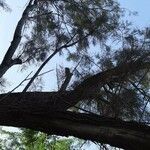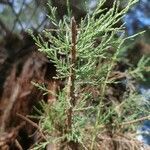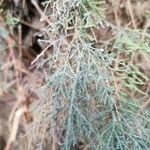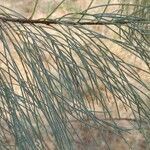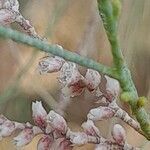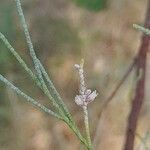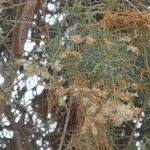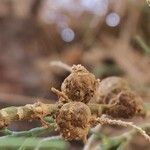Trees, to 10+ m. Leaves sheathing; blade abruptly pointed, 2 mm. Inflorescences 3–6 cm × 4–5 mm; bract exceeding pedicel, not reaching calyx tip. Flowers 5-merous; sepals 1–1.5 mm, margins entire; petals oblong to elliptic, 2–2.5 mm; antisepalous stamens 5, filaments alternate with nectar disc lobes, all originating from edge of disc. 2n = 24.
A shrub or tree. It grows 10 m tall. The bark is grey or reddish brown. The branches are erect and spreading. The leaves form a sheath around the small branches. The tip has an abrupt sharp point. The flowering shoot is 3-6 cm long. The flowers have 5 parts. They have a small flower stalk. The flowers are pinkish or white.
Small tree up to 10 m, with feathery greyish foliage, halophytic, monoecious. Leaves mostly 1–2 mm long, scale-like, each forming a sheath around the stem. Flowers subsessile. Sepals, petals and stamens 5. Petals elliptic, c. 2 mm long, pale pink. Nectary disk protruding between the stamen bases.
